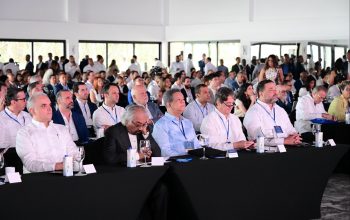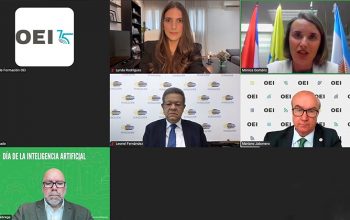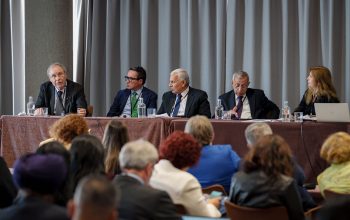news
“Populism on the International Stage”, an article by Dr. Leonel Fernández
March 28, 2017
Observers of international politics tend to affirm that popular right-wing figures like Donald Trump in the United States, Marine Le Pen in France, and Geert Wilders in the Netherlands can all be catalogued as populist leaders.
The same thing has been said regarding prominent progressive or leftist heads of state in Latin America like Venezuela’s Hugo Chávez, Bolivia’s Evo Morales, and Ecuador’s Rafael Correa.
How is it possible that leaders with such dissimular values, ideas, and trajectories in the political sphere could be put in the same category of populist? To answer this question, we have to start with an understanding of the concept of populism. Nonetheless, despite certain commonalities of the populist phenomenon, there’s currently no unanimous criteria to define it.
In general terms, populism – which is neither an
ideology nor a current of thought – involves creating groups, social movements, or political parties one the basis of a confrontation or conflict between the people (understood as the set of social sectors that form “the masses”) and the elites (identified as those privileged in power and fortune).
But the issue is much more complicated than that, as that conflict varies depending on historical moments and circumstances; and obviously that is
what delineates the different versions of populism and the left- or rightwing orientation among the political leaders identified with this political trend.
As an historical phenomenon, populism was born in Russia in the second half of the 19th century. It arose from the struggles of small agricultural producers or farmers, –called Narodniks (meaning people in Russian) – after their emancipation from their position as fiefs, against the new capitalist
trends that began to be introduced in the country.
Likewise, the final decade of the 19th century saw the appearance of the so-called People’s Party in the United States, whose aim was also to fight for the vindication of agricultural producers affected by the development of monopolist tendencies within US capitalism at that time.
POPULISM IN LATIN AMERICA
In both Czarist Russia and the United States, populism, as an expression of
agrarian struggle, lasted until the outbreak of World War I. Then, in the US case, it fizzled, only to reappear with new features from the 1940s right up to the present.
In Latin America, on the other hand, populism emerged as a reaction to the oligarchic state created after the declaration of independence. In that system, large landholders, through the export of agrarian and mining products, became the great wielders of wealth and promotors of the political strongmen of
that era.
Populism in Latin America is associated with the process of industrialization and urbanization that began during the 1920s and accelerated after the Great Depression of the 1930s.
This process gave rise, in some countries in the region, to the formation of social movements and political parties sustained on an alliance between the emerging industrial sector, the layers of professionals that were taking shape, the new movement of
union-organized workers, and traditional agrarian producers or campesinos.
Those new social movements and political parties toppled the old oligarchic state that arose after independence, and created what has been called the populist state.
The Latin American populist state was characterized by the adoption of protectionism for nascent local industries as part of a program of import substitution; state intervention in the running of
the national economy; nationalization of natural resources like oil, copper, and other raw materials; the recognition of the people as sovereign; the invocation of the independence and self-determination of the nation; the appearance of a charismatic leader who incarnated and symbolized the people’s longing for social change; and the identification of an external force – imperialism – as a threat to national development.
Commonly aired examples of this
classic model of populism in Latin America include, among others, General Lázaro Cárdenas in Mexico, Juan Domingo Perón in Argentina, Getulio Vargas in Brasil, Haya de la Torre in Peru, Rómulo Betancourt in Venezuela, and José María Velasco Ibarra in Ecuador.
CONTEMPORARY POPULISM
Later, as a result of the debt crises of the 1980s, which gave rise to the so-called lost decade in Latin America, new populist politicians emerged such as Carlos Menem in Argentina,
Fernando Collor de Melo in Brasil, and Alberto Fujimori in Peru, who nonetheless applied neoliberal policies once they took power.
To confront that neoliberalism – which consisted of liberalization and market-opening measures, privatization of public firms, and promotion of free trade, and began to fall into crisis in the 1990s – a new group of progressive leaders rose in Latin America.
Among those leaders, as mentioned, were Hugo Chávez in Venezuela,
Lula da Silva in Brasil, Rafael Correa in Ecuador, Néstor and Cristina Kirchner in Argentina, and Evo Morales in Bolivia.
Unlike the prior wave of populist leaders, who could be deemed (paradoxically) neoliberal or right-wing populists, Chávez et al. proceeded to confront neoliberalism and apply state interventions to the economy, social programs for the most vulnerable sectors, and nationalization of private enterprises and natural resources.
In the
United States and Western Europe, the phenomenon of globalization and more specifically the financial crisis of 2008, which sparked the Great Recession, allowed new forms of political participation to arise that questioned the old order from both sides of the political spectrum.
In opposition to the Obama administration’s bank bailout plans arose the so-called Tea Party, linked to the Republican Party and made up of a network of conservative organizations
opposed to tax increases, free trade, and state-run social welfare programs.
Also as a result of the financial crisis of 2008, but in contrast to the Tea Party’s far-right populism, was the Occupy Wall Street movement, which put blame for the social inequality and the straits in which 99 percent of the population lived on the top 1 percent of society, composed of Wall Street bankers and Washington politicoes.
During the US presidential
election, Bernie Sanders, candidate for the Democratic Party nomination, took on the set of demands of these groups and became, in the process, a left-wing populist leader.
In Western Europe, the austerity policies adopted in the face of the crisis sparked leftist protest movements in both Greece and Spain, among them the Indignados, which ended up becoming the PODEMOS party led by Pablo Iglesias, and the Syriza party, currently in power under the leadership of Alexis
Tsipras.
But the economic crisis, together with a certain skepticism of the European Union, the increase in unemployment, and the migration crisis, contributed to boosting a group of ultra-rightwing, ultra-nationalist, and xenophobic parties like UKIP (the United Kingdom Independence Party), the Front National in France, the Freedom Party in Austria, and the Party for Freedom in the Netherlands.
These are all classed as rightwing populists, and
it’s precisely in this same category that Donald Trump of the United States – who made it to the White House with the support of the Tea Party and anti-establishment conservative groups – belongs in.
Nonetheless, in adopting an agenda of financial deregulation, of leadership by powerful bankers in his administration, of tax cuts for corporations, and of increases to military spending, Donald Trump went from being a candidate opposed to Washington power,
to being its proper leader and commander in chief.
How strange this phenomenon of populism, in all its different variants, can turn out to be – especially in times of crisis.






